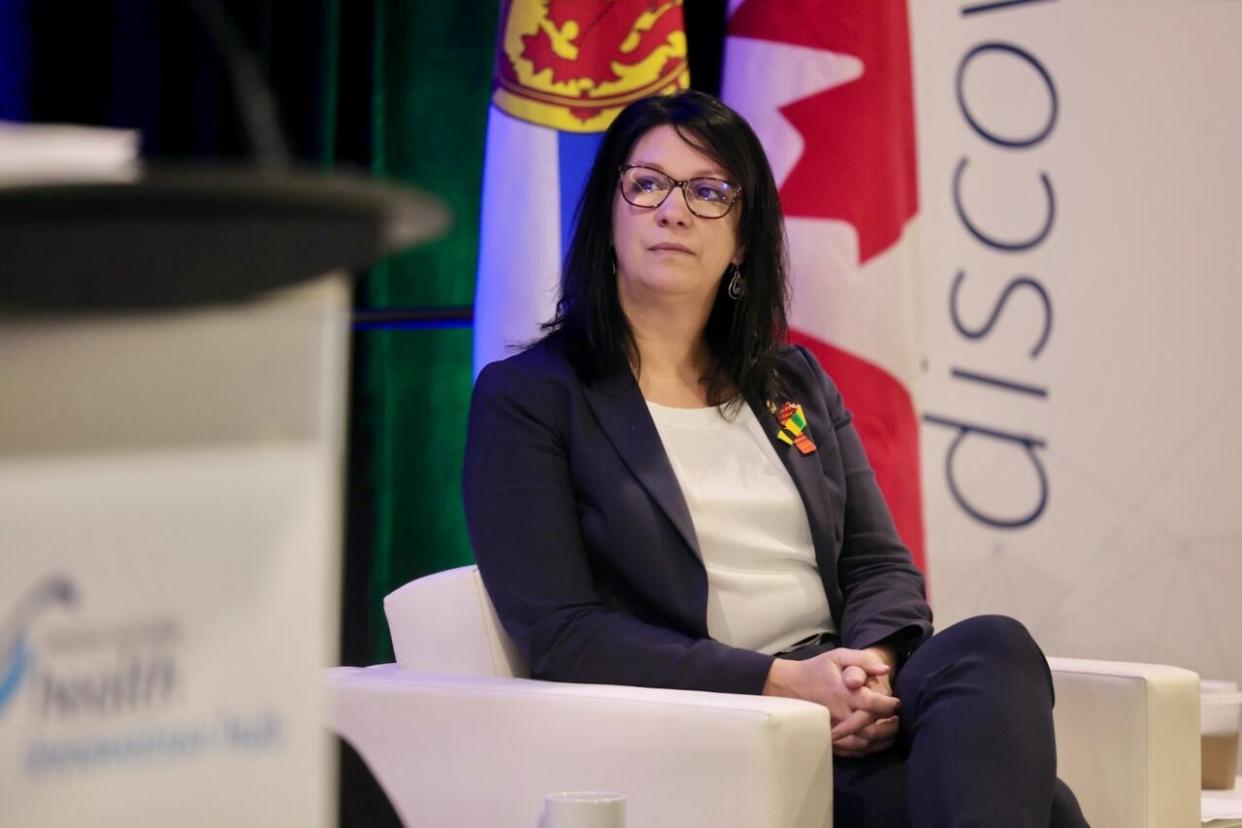N.S. health minister sees progress in the system, but knows there's more work to do

Michelle Thompson saw the cracks forming in Nova Scotia's health-care system almost 30 years before running for public office, and ultimately becoming the province's health minister.
It was 1992. The recent nursing school graduate was struggling to find a full-time job.
She remembers the conversation at the time was around there being too many nurses and too many doctors. She said successive provincial governments were looking for cost savings.
Rather than finding ways to transform the system, governments looked to downsize, said Thompson.
"It took me almost 10 years to secure a full-time job after I graduated," she said in a recent interview.
"That immediate response to a period of time really is what is impacting us now, I believe. We changed the models of education. We reduced staffing in the hospital."
'I have political will'
Today, Nova Scotia — and every other province for that matter — can't get enough doctors and nurses.
As provincial governments collaborate where they can but also compete for the same pool of workers, and look for ways to expand the talent base, Thompson finds herself half way through a political mandate driven by a single promise — to fix health care in Nova Scotia.
The campaign promise by Premier Tim Houston in 2021 seemed as audacious as the one made by a previous premier who pledged enough doctors for everyone in the province. When Stephen McNeil stepped down as premier in the winter of 2021, almost 56,000 people were on the province's need-a-family-practice registry.
That number grew to about 75,000 when the Tories took office two years ago. Today, driven by factors such as a population boom and doctors retiring or closing their offices, more than 152,000 Nova Scotians do not have a primary care provider.
Despite the magnitude of the Tory campaign promise, Thompson said she found the idea inspiring. Two years after her party formed government, she said she finds herself in "a very critical and fortunate time" for health care.
"I have political will — you know, really historical investments — to transform a system that has really been reduced over the past 30 years."
Those investments have taken a variety of shapes.
Spending big on big projects
The Tories have continued and, in some cases, expanded the hospital redevelopment plans advanced by the former Liberal government.
It will be years before the final bills are counted, but the work on Cape Breton Island, in the Halifax Regional Municipality and other parts of the province will cost billions of dollars.
The government is also finally moving forward with a plan to create a single electronic medical record for patients. It's doubled down on the use of data and technology to help determine where services are most required and how to streamline processes to get patients care sooner.
Thompson's government has also continued to build on the work of previous governments by expanding nursing seats in the province. Houston has offered every Nova Scotia nursing school grad a job and added more residency seats at Dalhousie University's medical school.
The Tories have pledged a new medical school, this one focused on rural family medicine, at Cape Breton University, and are building long-term care beds across the province.
There have also been efforts to expand the scope of practice for health-care professionals, including nurses, pharmacists and paramedics, and the expansion of other team members such as physician assistants, all in an effort to ease the workload of physicians while also acknowledging that not everyone needs to see a doctor for every health issue.
Efforts to address need-a-doctor wait list
While efforts to make the licencing process less burdensome for health-care professionals is intended to help attract more nurses and doctors to the province, recently signed contracts with both working groups — not to mention incentives to keep nurses on the job and bring recent retirees back to the front lines — should also help.

The Tories have pledged a new medical school, this one focused on rural family medicine, at Cape Breton University, and they're building long-term care beds across the province. (Shutterstock)
While there is some progress, it can be slow. The government acknowledged earlier this year it would not meet its self-imposed deadline to reduce surgical backlogs.
Thompson said some steps will bring fast relief, others will take years before change takes hold, but it's all intended to create a more modern health-care system that works better for patients and the people working in the system.
But what about that pesky need-a-family-practice registry?
Since its creation, opposition politicians have used it as proof that the government of the day wasn't doing enough. Houston called the situation a crisis while in opposition.
Governments, meanwhile, have talked about other ways to get people care while continuing to work on recruitment.
'We are pulling every lever we can'
Thompson points to initiatives such as the creation of urgent treatment centres, mobile primary care clinics, virtual medicine and the recently launched primary care clinics in pharmacies as steps all intended to divert traffic away from overcrowded emergency departments while also providing access to care for people who do not have a family practice.
"So, we are pulling every lever we can," she said. "There's just not one thing — it's going to be incremental progress over time."
Ideally, more collaborative care centres will be established, she said, and those will begin taking on people from the registry. The collaborative model, where a practice includes a variety of health-care professionals, is intended to give patients a health home but also match them with the appropriate provider based on what they need at a given appointment.
Progress on those, however, has been slow. There were 92 when the Tories took office. Today there are 101. A government spokesperson said other centres are in the process of being established and services at some sites enhanced.
It all illustrates how big a challenge Thompson and her government face, while also dispelling the notion that health care is something that can be solved during a single election cycle.
Investing in the long game
Shortly after their election win, Thompson, Houston and other senior officials travelled across the province to meet with health-care professionals to hear from them directly about their concerns and ideas for how to make the system better. Those meetings helped inform the government's work over the last two years and the plan it continues to follow, said Thompson.
She recalls working as a nurse and later as a long-term care administrator and feeling like she and her colleagues had ideas that could help the system, but not feeling like they could get where they needed to to make a difference. The aim of those meetings was to give people the outlet Thompson never felt she had.
"I feel that when you create a respectful, dynamic environment for health-care workers, they will be drawn here," she said.
"There are so many things that we need to do and I think, you know, people will see that we're working very, very hard, that we are making incremental change. We're investing in the long game, but we're also investing in what we can do immediately in order to alleviate the stresses."
MORE TOP STORIES


